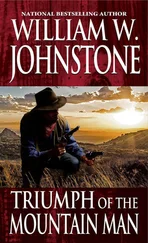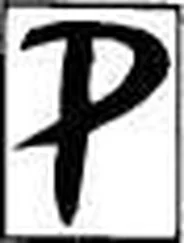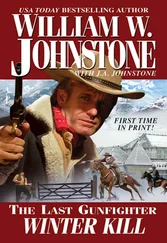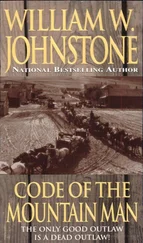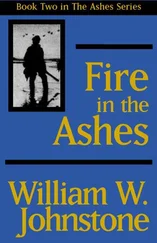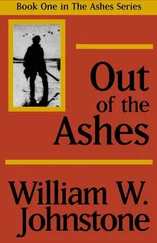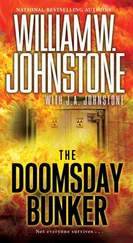William Johnstone - A Good Day to Die
Здесь есть возможность читать онлайн «William Johnstone - A Good Day to Die» весь текст электронной книги совершенно бесплатно (целиком полную версию без сокращений). В некоторых случаях можно слушать аудио, скачать через торрент в формате fb2 и присутствует краткое содержание. Год выпуска: 2012, Издательство: Kensington Publishing Corp., Жанр: Старинная литература, на английском языке. Описание произведения, (предисловие) а так же отзывы посетителей доступны на портале библиотеки ЛибКат.
- Название:A Good Day to Die
- Автор:
- Издательство:Kensington Publishing Corp.
- Жанр:
- Год:2012
- ISBN:нет данных
- Рейтинг книги:4 / 5. Голосов: 1
-
Избранное:Добавить в избранное
- Отзывы:
-
Ваша оценка:
- 80
- 1
- 2
- 3
- 4
- 5
A Good Day to Die: краткое содержание, описание и аннотация
Предлагаем к чтению аннотацию, описание, краткое содержание или предисловие (зависит от того, что написал сам автор книги «A Good Day to Die»). Если вы не нашли необходимую информацию о книге — напишите в комментариях, мы постараемся отыскать её.
A Good Day to Die — читать онлайн бесплатно полную книгу (весь текст) целиком
Ниже представлен текст книги, разбитый по страницам. Система сохранения места последней прочитанной страницы, позволяет с удобством читать онлайн бесплатно книгу «A Good Day to Die», без необходимости каждый раз заново искать на чём Вы остановились. Поставьте закладку, и сможете в любой момент перейти на страницу, на которой закончили чтение.
Интервал:
Закладка:
Swamper leaned over the edge of the roof for a looksee. A trio of braves on foot came skulking south down the side street. The shotgun was empty or he would have cut loose on them.
The brave in the lead spotted him, swinging up a rifle toward him. Swamper threw himself back, landing on his ass and elbows, but dodging a bullet. He crawled away from the edge and reloaded.
The braves in the street fired into the Golden Spur’s west windows. Bullets ripped through the plank-boarded lower halves of window frames, felling a gray-bearded Mexican and a beardless youth inside.
Flint Ryan went to the grand staircase, rifle in hand, taking the stairs two at a time until he was at the midpoint of the flight. This put him several feet above the tops of the planks nailed across the lower west windows. He half sat, half sprawled across the steps, looking down into the street for a shot. A brave flashed into view rushing a window, and Ryan shot him.
On the roof, Swamper heard suspicious noises coming from the side of the building. He swung his weapon over the edge, pointing it downward. A brave lay flat in the street where Ryan had shot him. A second brave stood beside a window, his back flattened against the wall, edging in for a shot.
Swamper swung the shotgun down at him, but before he could fire he was shot by the third brave in the group, who’d been hanging back from the others, waiting for Swamper to show himself. He drilled Swamper through the forehead, blowing off the top of his skull.
Swamper fell back in a heap on the roof, shotgun falling from his dead hands into the street.
Below, the brave standing beside the window peered through gaps in the nailed-up boards. Plenty of human targets were scattered around inside the gambling hall. He fired inside, cutting down a man who stood on the other side of the floor at the east wall.
Defenders fired back, tearing holes through plank boards, sending splinters flying, but the brave ducked under cover and remained unhit.
Ryan climbed to the top of the stairs, turning left on the landing, moving along the balcony to a window overlooking the street below. The window was unboarded, open.
He peeked out cautiously, looking for the Comanche who’d just shot through the window. Instead, he saw a brave shinnying up a drainpipe, climbing up the side of the building. It was the one who’d shot Swamper, though Ryan had no way of knowing that.
The climber was almost level with Ryan. They saw each other at the same time.
Ryan’s rifle was at the ready. He fired into the Comanche at point-blank range, blasting him off his perch.
The climber dropped, narrowly missing a brave standing pressed against the wall with his rifle raised to fire again through the window. Ryan shot him, too.
A lone Comanche came galloping in from the north, riding along the eastern edge of town toward the courthouse. He heaved a ball-like object through the open space of a high window, clear above the plank barricade and into the building. It hit the courtroom floor, rolling for some fair yardage before bumping to a halt against a wooden bench.
Yipping his defiance, the brave wheeled his horse around, racing back to cover.
The object was revealed to be a human head, un-scalped, the deliverer having used its longish hair as a handle by which to hold and fling it inside.
Somewhat the worse for wear, it was still recognizable as the severed head of Hapgood, the other rider who’d set out at nightfall to reach the cavalry troop escorting Major Adams’s wagon train west of the Breaks.
Whatever else, the cavalry would not be riding to the rescue of Hangtown.
TWENTY-THREE
With violent clashes peppering the Four Corners, Red Hand assembled his men for the main assault.
They came out of the eastern treeline on horseback, filtering from behind the brush, the woods yielding a seemingly inexhaustible supply of Comanche warriors.
Streamers and banks of morning mist drifted above the earth, giving the initial appearance of the braves a dreamlike aspect, as if they were phantoms materializing from the gloom.
They took on an all-too-solid reality as they came forward—at least a hundred and twenty-five of them ... or more.
A long line of mounted braves, several ranks deep, stretched out on both sides of Hangtree Trail. They faced the town in a front reaching from Commerce Street north of the courthouse to Hobson’s livery stable in the south.
The Comanches sat silently on their ponies, hard, stoic, remorseless.
They carried rifles, carbines, muskets, six-guns, lances, bows and arrows, tomahawks, stone-headed war clubs, and knives. Many wore round buffalo-hide shields over one arm.
They were well armed. Red Hand had seen to that. Anglo and Mexican captives—young women, mostly, but also boy and girl prisoners hardy enough to withstand the harrowing ordeal—had been traded for weapons and ammunition in advance of the Great Raid. They’d been herded overland to secret meeting places deep in the Staked Plains where renegade Comancheros camped, swapping whiskey and guns for human flesh. The captives were ultimately sold into slavery deep in the remote vastness south of the Rio Grande, never to be seen again by friends and family.
Red Hand took his place at the center of the front, brandishing the Fire Lance. The real, authentic Fire Lance, the one he’d taken from an Austro-Hungarian cavalryman who’d come a long way from home to die in service to Maximilian’s foredoomed Empire of Mexico.
He used it as a baton, conducting and directing the movements of his men. It was dormant, un-torched, for its fiery aspect lost its impact in the light of day.

In their perch high in the church tower, Sam Heller and Johnny Cross could see some, but not all, of the Comanche battle line where it extended north and south beyond the courthouse. Its center was blocked by the courthouse itself, shielding Red Hand from being targeted by Sam’s long rifle with its telescopic sight.
“Looks like Red Hand’s getting ready to make his move,” Johnny acknowledged.
“He’s tricky,” Sam stated. “If he’s showing himself in the east, it means you better look west. The bunch at Four Corners, Barton, Lassiter, Zorn, and the rest of them are better positioned to deal with him than we are. We’re here to guard the back door.”
And so they were. East, the ground was open with little cover, affording clear fields of fire to the defenders. West, the approach to Four Corners consisted of the street grid, with much cover provided by blocks of buildings honeycombed with streets, lanes, and alleys.
If Sam had been making the attack, he would have directed his forces to come in singly or in combination from the north, south or west, with minimal concentration of attackers coming from the east. That’s why he had set up his sniper’s nest in the church tower, giving him good firing lines along the north, south, and west approaches.
By the same logic, the flat west of the church would be a prime staging area to marshal forces for an attack. Charging horsemen could work up a nice head of steam crossing east across open ground.
The knoll on which the church and Boot Hill were sited would screen the attackers from view of those in Four Corners until the charge topped the rise. That’s why Sam had planted red-staked blast pits on the flat.
If he’d guessed wrong, and the Comanches did not come from the west, he could still do plenty of damage to them with his scoped rifle from the church tower heights.
So he and Johnny Cross guarded the back door, scanning the landscape for a west-based assault.
Sure enough, Red Hand had divided his forces. A second Comanche band appeared, coming out of the stepped ridges in the north. They crested the nearest ridge, having hidden behind it in a valley.
Читать дальшеИнтервал:
Закладка:
Похожие книги на «A Good Day to Die»
Представляем Вашему вниманию похожие книги на «A Good Day to Die» списком для выбора. Мы отобрали схожую по названию и смыслу литературу в надежде предоставить читателям больше вариантов отыскать новые, интересные, ещё непрочитанные произведения.
Обсуждение, отзывы о книге «A Good Day to Die» и просто собственные мнения читателей. Оставьте ваши комментарии, напишите, что Вы думаете о произведении, его смысле или главных героях. Укажите что конкретно понравилось, а что нет, и почему Вы так считаете.

